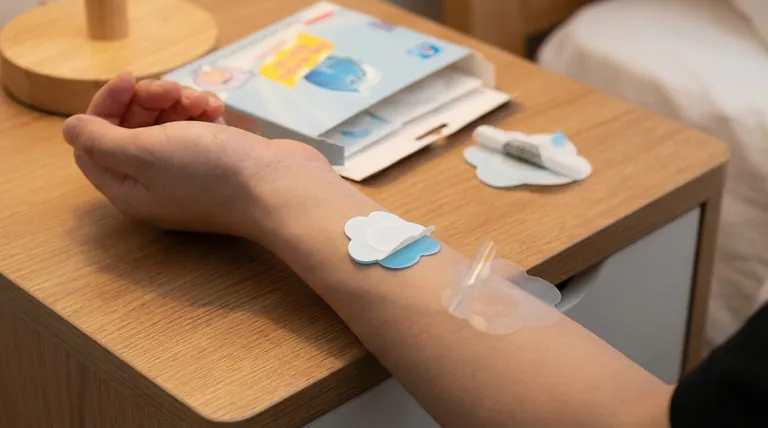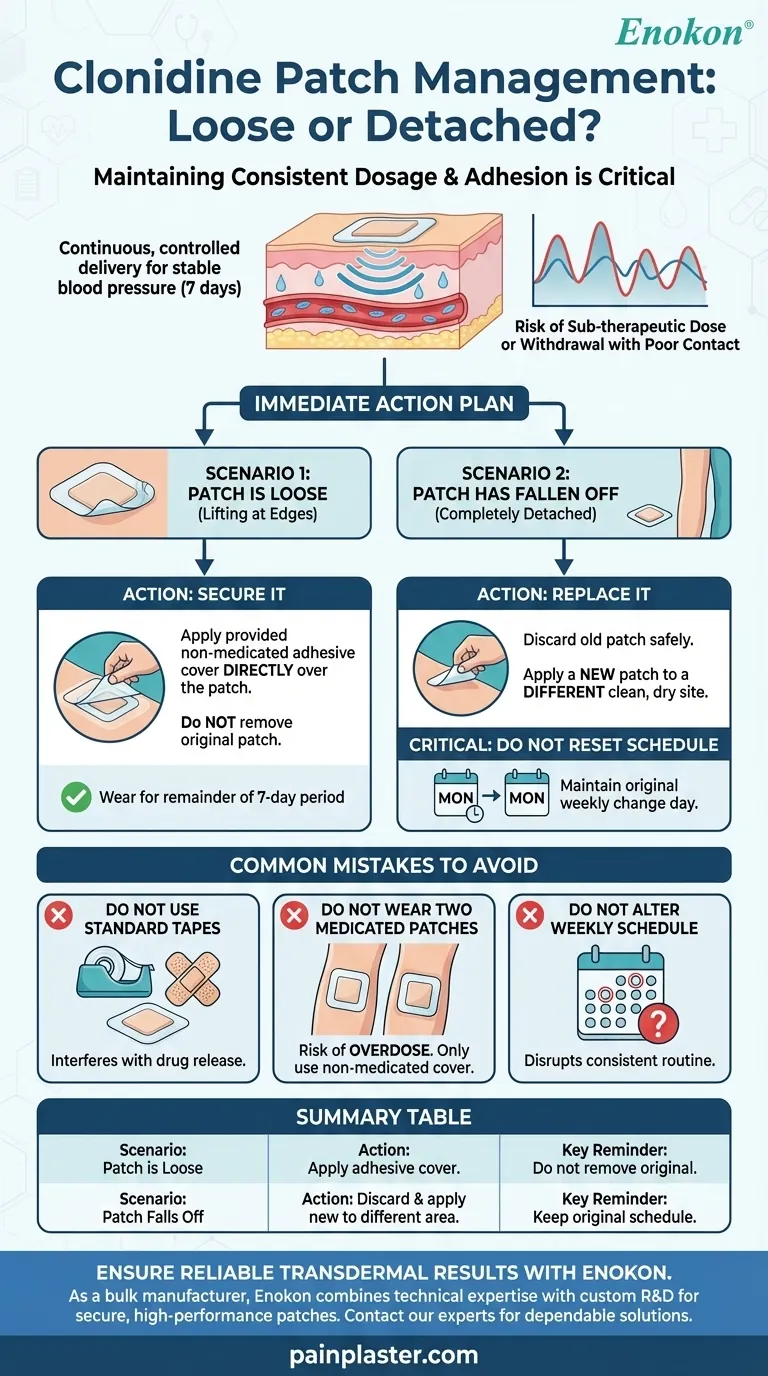In short, if your clonidine patch is loose, secure it; if it falls off, replace it. If the patch is simply lifting at the edges, you should apply the adhesive cover that comes with it directly over the existing patch. If the patch has detached completely, discard it and apply a new patch to a different area, but continue to follow your original weekly schedule for changing it.
The primary goal is to maintain a consistent, stable dose of clonidine in your system. Your action—either securing or replacing the patch—is determined by how well the patch can still adhere to your skin, but the timing of your next scheduled change should always remain the same.

Why Consistent Adhesion is Critical
How Transdermal Patches Work
A clonidine patch is not just a sticker; it's a sophisticated drug delivery system. It is designed to release a steady, controlled amount of medication through your skin and into your bloodstream over a full seven days.
This continuous delivery helps maintain stable blood pressure and manage symptoms without the peaks and valleys associated with oral medication. Proper skin contact is essential for this process to work as intended.
The Risk of a Loose Patch
When a patch becomes loose, the surface area in contact with your skin is reduced. This can significantly decrease the amount of medication being absorbed, leading to a sub-therapeutic dose.
If a patch falls off entirely, the drug delivery stops abruptly. This can cause your blood pressure to rise or lead to withdrawal symptoms. Therefore, addressing a loose or detached patch promptly is a matter of medical importance.
Your Immediate Action Plan: Loose vs. Detached
Your response depends on whether the patch is partially loose or has completely fallen off.
Scenario 1: The Patch is Loose but Still Attached
If the patch is lifting at the edges but is still mostly in contact with your skin, do not remove it.
The medication often comes with a separate, non-medicated adhesive cover. You should place this cover directly over the clonidine patch to secure it firmly to your skin. This combination should then be worn for the remainder of the 7-day period.
Scenario 2: The Patch Has Fallen Off
If the patch has detached completely or is so loose that it will not stick, you must replace it.
First, properly fold the old patch in half with the sticky sides together and discard it safely. Then, apply a new patch to a clean, dry, and hairless area of skin, choosing a different location from the previous one.
Critically, do not reset your schedule. If your regular change day is Monday, you should still remove this new patch and apply another one on the upcoming Monday.
Common Mistakes and What to Avoid
Correctly managing your patch is as much about knowing what not to do.
Do Not Use Standard Tapes
Never use standard household tape or regular adhesive bandages to try and secure a loose clonidine patch. These materials are not designed for this purpose and can interfere with how the medication is released from the patch into your skin. Only use the approved adhesive cover provided.
Do Not Wear Two Medicated Patches
If you replace a patch that fell off, you should only wear the single new patch. The instruction to use a "cover patch" refers to the non-medicated adhesive overlay, not a second clonidine patch. Wearing two active patches at once can lead to an overdose.
Do Not Alter Your Weekly Schedule
Resist the temptation to start a new 7-day count when you apply a replacement patch. Sticking to your original "patch change day" maintains a consistent routine and ensures proper dosing over the long term.
Making the Right Choice for Your Treatment
Your course of action should be simple and immediate to ensure your treatment remains effective.
- If your primary issue is a patch lifting at the edges: Use the provided adhesive cover to secure it for the remainder of the 7-day period.
- If your primary issue is a patch that has fallen off completely: Replace it immediately with a new patch and plan to change it again on your next regularly scheduled day.
By following these precise steps, you can confidently manage your treatment and maintain control over your health.
Summary Table:
| Scenario | Action | Key Reminder |
|---|---|---|
| Patch is Loose | Apply the provided adhesive cover over it. | Do not remove the original patch. |
| Patch Falls Off | Discard the old patch and apply a new one to a different area. | Keep your original weekly change schedule; do not reset it. |
Ensure your transdermal patches deliver consistent, reliable results. As Enokon, a bulk manufacturer of reliable transdermal patches and pain plasters for healthcare and pharma distributors and brands, we combine technical expertise with custom R&D to develop patches that adhere securely and perform as intended. If you need high-quality, dependable transdermal solutions for your products, contact our experts today to discuss your requirements.
Visual Guide

Related Products
- Asthma Cough and Pain Relief Patch for Adults and Kids
- Far Infrared Deep Heat Relief Patches Medicated Pain Relief Patches
- Herbal Eye Protection Patch Eye Patch
- Prostate Pain Kidney Health Care Patch for Men
- Icy Hot Menthol Medicine Pain Relief Patch
People Also Ask
- What are the key benefits of using the cough relief patch? Soothe Your Cough with Targeted, Non-Oral Relief
- How does the cough relief patch provide targeted relief? Direct, Soothing Comfort for Coughs & Chest Congestion
- How does capsaicin work in the Reliever Patch? A Drug-Free Solution for Targeted Pain Relief
- How should missed doses of the Reliever Patch be handled? Safe Usage Guidelines
- What role do natural ingredients and acupoint stimulation play in a cough relief patch? Synergistic Relief Explained














